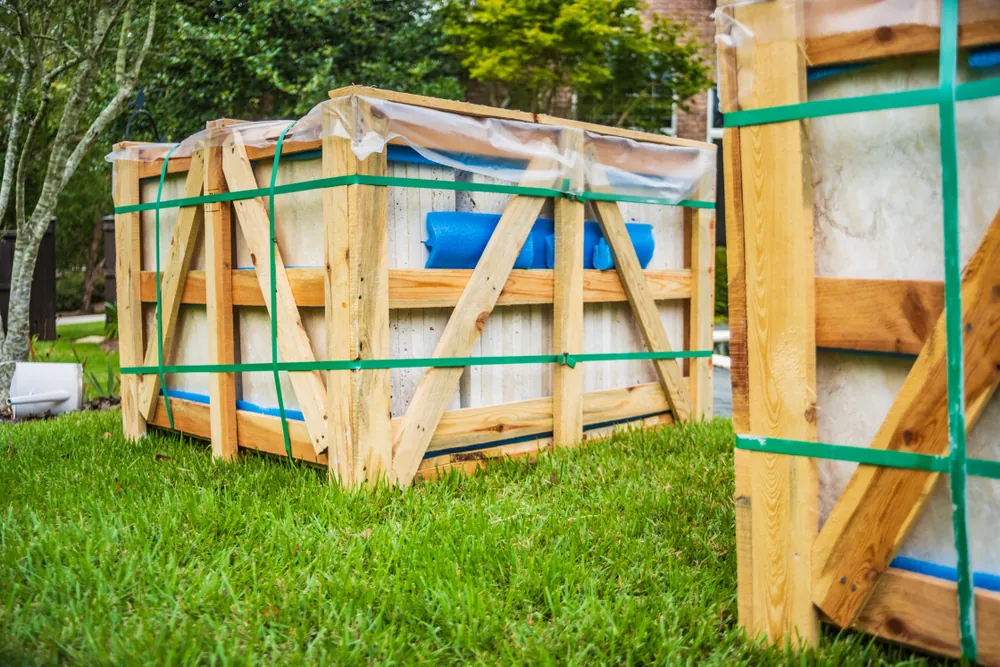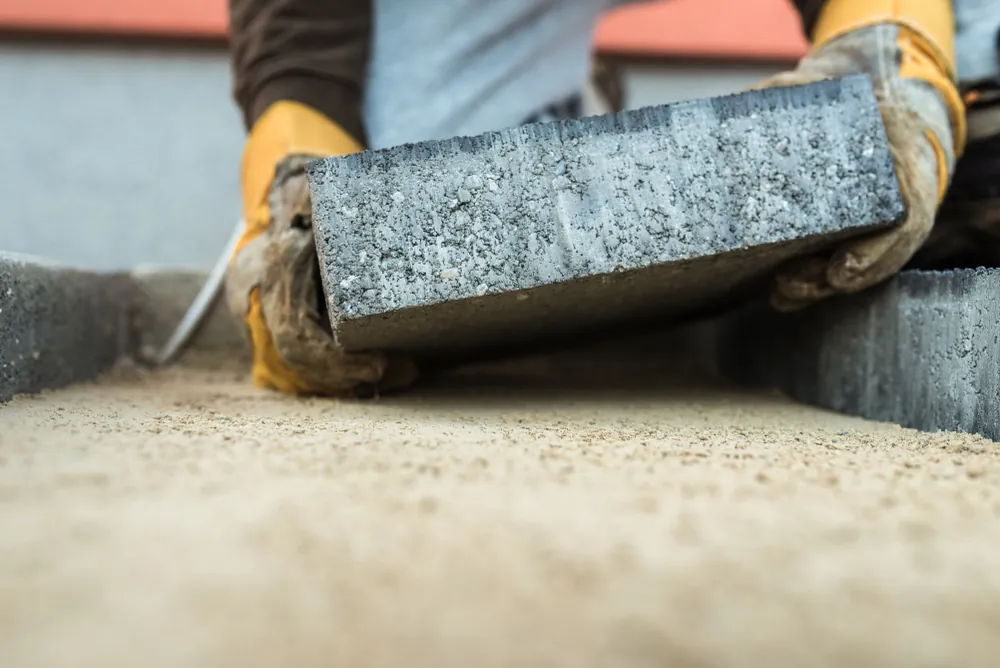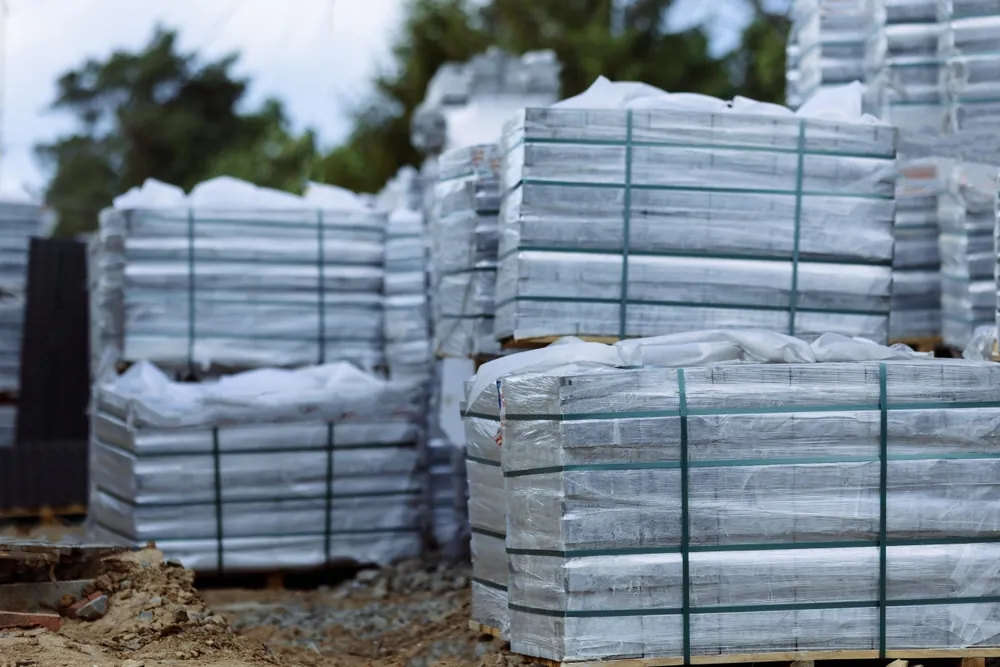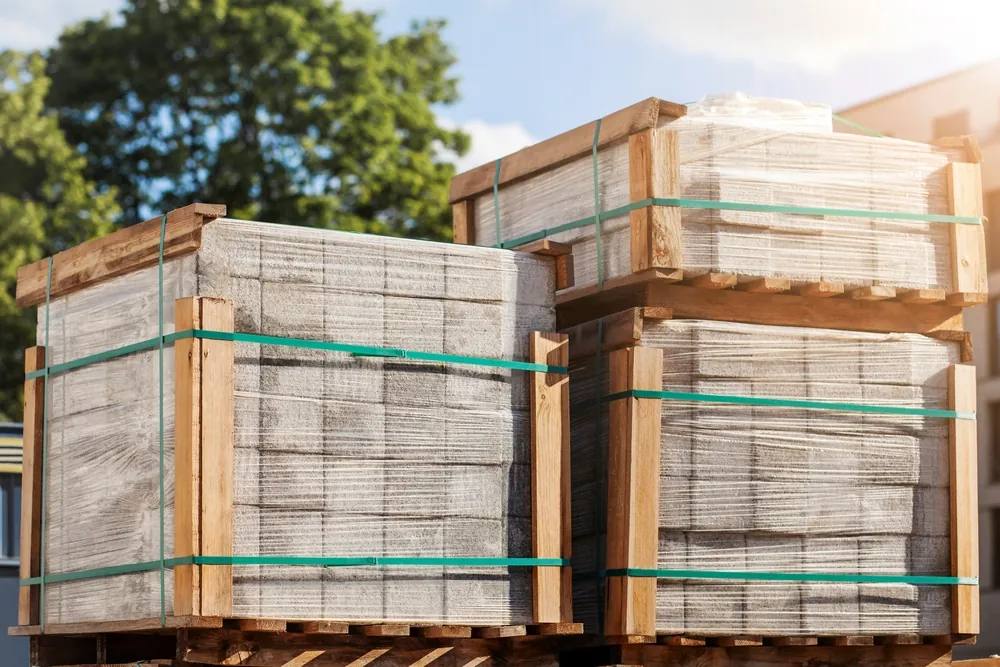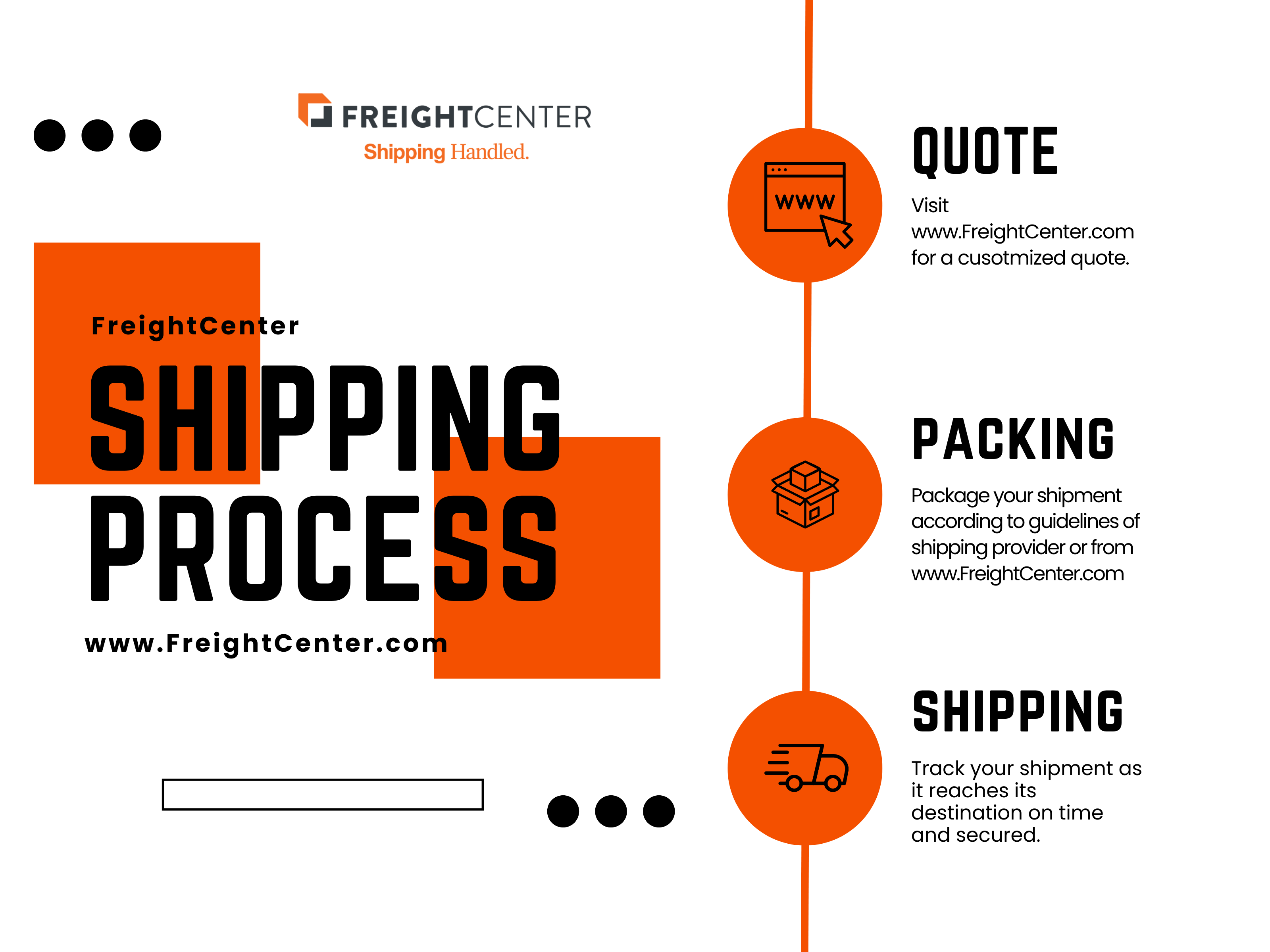
Shipping Pavers
Transform your outdoor oasis with our paver shipping service! From rustic charm to contemporary elegance, we deliver durable and stylish paving stones to enhance your landscape. Explore our seamless shipping solutions and pave the way to your dream outdoor space today!"We will break it into 6 easy steps to ship.

Shipping pavers requires careful consideration of packaging, labeling, insurance, tracking, and special handling services. By selecting a reliable shipping provider and ensuring proper packaging and protection, customers can have peace of mind knowing their pavers will arrive at their destination in excellent condition, ready for use in landscaping and construction projects. At FreightCenter, we can help you navigate the entire process and ensure your package arrives on time and undamaged.
Why Choose Us For A Freight Quote?
- Shipping quotes anytime
- Get freight shipping quotes to anywhere in the U.S. & Canada.
- Unbeatable discounts on your freight LTL, truckload, rail, air, and more
- Automated freight tracking, paperwork & invoices
- Manage all quotes & shipments in one place
- 24+ years of logistics experience working for you!
We provide competitive freight shipping prices and an all-inclusive, easy-to-use shipping experience for our customers. Exceeding our customers’ expectations results in thousands of satisfied customer reviews and repeat business. We believe in the power of our customer relationships. Check out FreightCenter reviews from real customers, and learn what they have to say about their freight shipping experience!
- 2021, 2017 & 2016 Food Logistics’ Top Green Providers
- 2021 & 2018 Supply & Demand Chain Executives’ Pros to Know: Matthew Brosious
- 2020 & 2019 Top Food Logistics’ 3PL & Cold Storage Provider Awards
- 2020 & 2019 Business Observer’s Top 500 Companies on the Gulf Coast
- 2020 & 2017 SmartWay® Transport Partner
- 2020 & 2017 Food Logistics’ Champions: Rock Stars of the Supply Chain
- 2020 Best of Palm Harbor Awards for Local Businesses
- 2017 Green Supply Chain Award from Supply & Demand Chain Executive
- 2017 Tampa Bay Business Journal Heroes at Work
- 2016, 2015, & 2012 Food Logistics Top 100 Software and Technology Providers
- 2013 Tampa Bay Business 100 by Tampa Bay Business Journal
- 2013 Top 100 Great Supply Chain Partners by SupplyChainBrain
- 2012 TIA Samaritan Award Honorable Mention
- 2012, 2011 & 2010 TBBJ Fast 50 Recipient
- 2013, 2011, & 2010 Diversity Business Top Businesses
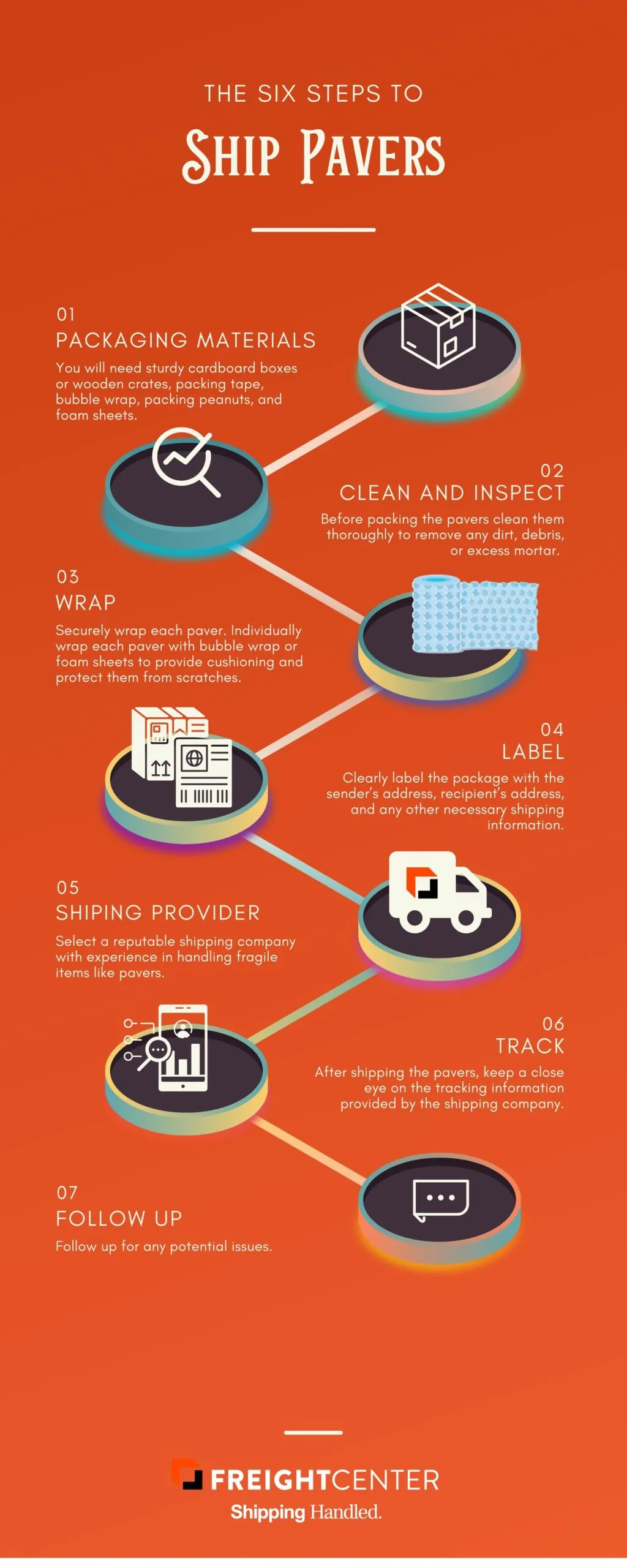
Select Suitable Packaging Materials
The first step in shipping is to gather the appropriate packaging materials. You will need sturdy cardboard boxes or wooden crates, packing tape, bubble wrap, packing peanuts, and foam sheets. Ensure the boxes or crates are slightly larger than the pavers to allow space for cushioning materials.
Clean and Inspect the Pavers
Before packing a paver, clean them thoroughly to remove any dirt, debris, or excess mortar. Inspect each paver for cracks, chips, or other damages that may affect its structural integrity during shipping. Avoid shipping a damaged paver, as it may break further in transit.
Wrap Pavers for Shipping
Securely wrap each paver. Individually wrap each paver with bubble wrap or foam sheets to provide cushioning and protect them from scratches. Ensure that the entire surface of each paver is covered and securely taped to keep the wrapping.
Arrange them in the box or crate. Place a layer of packing peanuts or crumpled newspaper at the bottom of the box or crate to create a soft cushioning base. Carefully arrange the wrapped pavers in the box, leaving enough space between them to add more packing material. Add additional cushioning. Fill any gaps with more packing peanuts or crumpled newspaper. The goal is to prevent movement or shifting during transportation. Shake the box gently to ensure there is no excessive movement.
Seal the package securely. Once everything is safely packed, close the box or crate securely using packing tape. Ensure all seams are tightly sealed to prevent the package from opening during transit.
Label the Package
Clearly label the package with the sender’s address, recipient’s address, and any other necessary shipping information. Include “Fragile” or “Handle with Care” labels to alert the shipping company and handlers to treat the package delicately.
Choose a Reliable Shipping Provider
Select a reputable shipping company with experience in handling fragile items. Request insurance coverage for the shipment to protect against loss or damage during transit.
Track the Shipment
After shipping, keep a close eye on the tracking information provided by the shipping company. This way, you can monitor the shipment’s progress and arrange to receive it promptly.
#1 Choosing Suitable Packaging Materials for Shipping Pavers
Shipping pavers can be challenging due to their weight and fragile nature. Whether you are sending them for a personal project or as part of a business, selecting the right packaging materials is crucial to ensure they reach their destination intact.
Sturdy Boxes or Wooden Crates
The first step in selecting appropriate packaging materials is to opt for sturdy boxes or wooden crates. These containers should be capable of withstanding the weight and pressure exerted by the pavers during transit. Cardboard boxes made of thick, corrugated material are suitable for smaller pavers, while a large and heavy paver may require a wooden crate for added strength and protection.
Cushioning Materials
Adequate cushioning is vital to protect a paver from potential damage during shipping. Bubble wrap, foam sheets, packing peanuts, and crumpled newspaper are all excellent choices for cushioning materials. The cushioning should be placed both at the bottom of the container and between each paver to prevent them from coming into direct contact with each other and the box or crate’s walls.
Size and Fit
Ensure that the packaging materials are appropriately sized for the pavers being shipped. The boxes or crates should be larger than the pavers to allow space for cushioning. If the packaging is too tight, there is a greater risk of damage, and if it is too loose, the pavers might shift during transportation, leading to potential breakage.
Protection from Moisture
A paver is often made of materials like concrete, stone, or clay, which moisture can affect. To protect them from rain, humidity, or other sources of moisture, consider using moisture-resistant packaging materials, such as plastic wrapping or moisture-resistant foam sheets. Additionally, avoid shipping pavers during extreme weather conditions that might expose them to moisture.
Weight Considerations
The weight of the packaging materials should be factored in when shipping heavy pavers. While sturdy packaging is necessary for protection. The overall weight of the shipment should not exceed the weight limitations set by the shipping company. Exceeding weight limits may lead to additional charges or delays in delivery.
Durability and Reusability
Choose packaging materials that are durable and reusable if possible. This reduces waste and ensures the materials can be used for future shipments or other purposes. Wooden crates, for example, can be reused multiple times, making them an eco-friendly option.
#2 Cleaning and Inspecting Pavers for Shipping
Pavers are popular and durable materials used in various landscaping and construction projects. Whether you are shipping for a personal project or as part of a business, cleaning and inspecting them carefully before sending them on their journey is essential. Proper cleaning and inspection ensure that the pavers arrive at their destination in excellent condition and reflect your commitment to quality and professionalism.
1. Gather the Necessary Tools
Gather all the necessary tools and equipment before you begin cleaning and inspecting each paver. You will need a stiff bristle brush, a garden hose or pressure washer, a bucket of water, mild detergent or cleaning solution, and safety gear, such as gloves and safety goggles.
2. Remove Debris and Dirt
Start by removing any debris or loose dirt from the surface of each paver. Use the stiff bristle brush to sweep away leaves, dirt, and other particles. Pay special attention to the gaps between the pavers, as debris can get lodged there.
3. Rinse the Pavers
Once the surface debris is removed, rinse the pavers with a garden hose or pressure washer. The force of the water will help remove any remaining dirt and reveal the true condition of the pavers.
4. Apply Cleaning Solution
If the pavers still appear dirty or stained after rinsing, prepare a cleaning solution using mild detergent and water in a bucket. Avoid harsh chemicals or acidic cleaners, as they may damage the pavers. Apply the cleaning solution to the surface of the pavers and scrub gently with the stiff bristle brush.
5. Rinse Thoroughly
After scrubbing, rinse with the garden hose or pressure washer to remove the cleaning solution and any loosened dirt. Ensure that all soap residues are thoroughly rinsed off.
6. Allow Pavers to Dry
Once the pavers are clean, allow them to dry completely before inspecting them. You can let them air dry naturally, or if time is limited, use towels or a blower to speed up the drying process.
7. Inspect Each Paver
With the pavers now clean and dry, carefully inspect each one for any signs of damage or defects. Look for cracks, chips, or uneven surfaces that may affect the pavers’ structural integrity during shipping. Identifying and avoiding shipping damaged pavers is essential, as they may break further during transit.
8. Separate by Quality
Based on your inspection, separate the pavers into different groups according to their quality. Place any damaged ones aside and use only the ones in good condition for shipping. This ensures you provide your customers or recipients with the best possible materials.
Shipping can be expensive, especially for oversized or international shipments. Compare the shipping rates and service options of different carriers to find the most cost-effective solution without compromising safety and reliability.
FreightCenter can compare costs for you!
Trucking is a popular mode of transportation for shipping pavers, especially for shorter distances or domestic shipments.
Trucks offer flexibility in terms of routes and delivery schedules, making them suitable for delivering large orders to construction sites, warehouses, or retail locations.
For international shipments or long-distance transportation across continents, ocean freight is commonly used. Bulk commodities are typically shipped in containers, either as full container loads (FCL) or less-than-container loads (LCL).
Air freight is the fastest mode of transportation, ideal for time-sensitive shipments or when immediate delivery is crucial. However, it is generally more expensive than other modes and may be less practical for large or heavy shipments.
Rail freight is an efficient option for shipping large quantities of pavers over long distances. Rail transport can handle heavy loads and is cost-effective for bulk shipments.
FTL stands for Full Truckload. In this shipping method, the entire available space in a truck is dedicated to a single shipment. When shipping pavers via FTL, the pavers will fill up the entire truck, and the shipment will not be shared with any other cargo from different customers.
LTL stands for Less-than-Truckload. In this shipping method, the truck's available space is shared by multiple shipments from different customers, including pavers from various suppliers. Each shipment is packed into separate pallets or crates and loaded together on the same truck.
Local deliveries for furniture and other home goods.

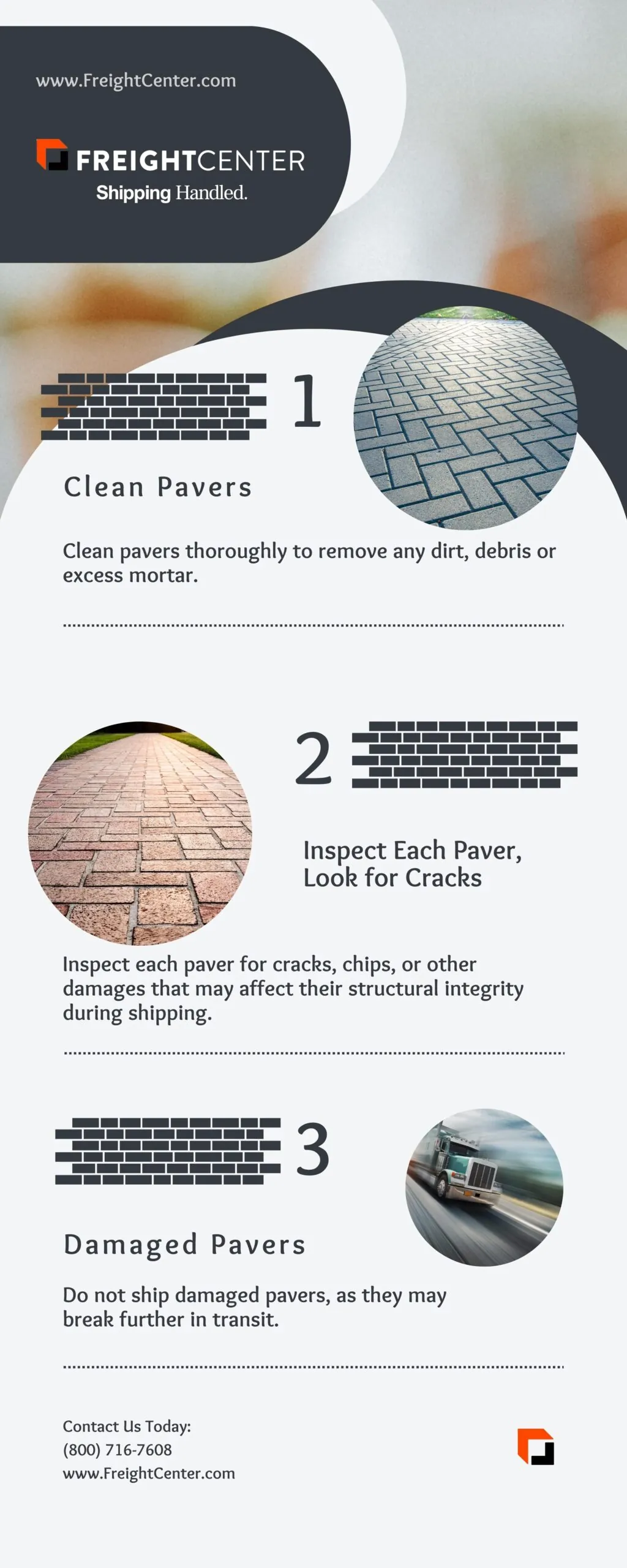
#6 How to Track a Shipment of Pavers
Shipping pavers for your landscaping or construction project can be an exciting but nerve-wracking experience. Once the shipment is on its way, it’s natural to want to know its status and ensure a smooth delivery. Fortunately, with modern shipping technology, tracking a shipment has become more accessible than ever.
Obtain Tracking Information from the Shipping Provider
The first step to tracking your shipment of pavers is to obtain the tracking information from the shipping provider. This information is typically provided when you schedule the shipment or receive a confirmation email with the tracking number. The tracking number is a unique identifier assigned to your shipment, allowing you to follow its progress.
Use Online Tracking Tools
Most shipping companies offer online tracking tools on their websites or mobile apps. Visit the website of the shipping provider and look for the “Track Your Shipment” or “Track Package” section. Enter your tracking number into the provided field, and the system will display your pavers’ real-time status and location.
Sign Up for Email or SMS Notifications
Many shipping companies offer the option to sign up for email or SMS notifications regarding your shipment’s status. By opting for these notifications, you will receive updates directly to your inbox or phone, informing you about any changes in the delivery schedule or estimated arrival time.
Monitor the Shipment Progress
Once you have access to the tracking information, monitor the progress of your pavers’ shipment regularly. The online tracking tool will display key milestones, such as when the package is picked up, processed at sorting facilities, and out for delivery. Keep an eye on any potential delays or issues during transit.
Contact Customer Support if Needed
If you notice any discrepancies or encounter problems with the tracking information, don’t hesitate to contact the shipping company’s customer support. They can provide clarification, answer your questions, and assist you in resolving any issues related to your shipment.
Be Aware of Time Zones and Working Days
When tracking international shipments, remember the time zones of the countries involved in the transit. Additionally, consider working days, as shipping companies may not operate on weekends or public holidays, which could affect the shipment’s progress.
Stay Patient and Plan Ahead
Shipping pavers may take several days, depending on the distance and shipping method. Stay patient and plan for the expected delivery date. If the delivery date is critical for your project, ensure you give yourself enough buffer time to account for any potential delays.
Shipping Pavers FAQs
Q. How do you transport paver stones?
A. When transporting paver stones, use a sturdy wheelbarrow or dolly with pneumatic tires to prevent damage and ensure smooth movement. Secure the stones with straps or ropes to prevent slipping or shifting during transport. Additionally, consider using a ramp or plywood to facilitate loading and unloading.
Q. How many 4×8 pavers in a pallet?
A. There are 480 stones in a pallet, and each stone measures 4×8 inches. Therefore, a pallet of 4×8 pavers covers a total area of 103 square feet.
Q. What should be used to transport paving slabs?
A. A builder’s wheelbarrow is the recommended choice for transporting paving slabs due to its strength and durability. Its design allows for easy maneuverability and efficient transportation, making it the most common method for moving paving materials. When it comes to transporting paving slabs, using a strong builders wheelbarrow is highly recommended.
Q. How do you move heavy pavers?
A. To move heavy pavers, using a wheelbarrow is highly recommended. You can effortlessly load 20-50 block pavers into a wheelbarrow for convenient lifting and transporting. By utilizing a wheelbarrow, you can efficiently move heavy pavers without straining yourself.
Q. How hard is it to move pavers?
A. Moving pavers can be challenging due to their weight, slipperiness, sharp edges, and awkward shapes. It requires significant physical effort to lift them, especially when picking them up individually from a stack in a box. However, using proper lifting techniques and equipment can make the task easier and safer.
Q. What is the best way to carry pavers?
A. The recommended method for carrying pavers is by bending your knees and not your back. This technique helps prevent injuries and promotes proper lifting posture. Remember to use caution and take breaks when necessary to avoid strain or muscle fatigue. Follow these guidelines to ensure a safe and efficient paving project.
#6 How to Track a Shipment of Pavers
Shipping pavers for your landscaping or construction project can be an exciting but nerve-wracking experience. Once the shipment is on its way, it’s natural to want to know its status and ensure a smooth delivery. Fortunately, with modern shipping technology, tracking a shipment has become more accessible than ever.
Obtain Tracking Information from the Shipping Provider
The first step to tracking your shipment of pavers is to obtain the tracking information from the shipping provider. This information is typically provided when you schedule the shipment or receive a confirmation email with the tracking number. The tracking number is a unique identifier assigned to your shipment, allowing you to follow its progress.
Use Online Tracking Tools
Most shipping companies offer online tracking tools on their websites or mobile apps. Visit the website of the shipping provider and look for the “Track Your Shipment” or “Track Package” section. Enter your tracking number into the provided field, and the system will display your pavers’ real-time status and location.
Sign Up for Email or SMS Notifications
Many shipping companies offer the option to sign up for email or SMS notifications regarding your shipment’s status. By opting for these notifications, you will receive updates directly to your inbox or phone, informing you about any changes in the delivery schedule or estimated arrival time.
Monitor the Shipment Progress
Once you have access to the tracking information, monitor the progress of your pavers’ shipment regularly. The online tracking tool will display key milestones, such as when the package is picked up, processed at sorting facilities, and out for delivery. Keep an eye on any potential delays or issues during transit.
Contact Customer Support if Needed
If you notice any discrepancies or encounter problems with the tracking information, don’t hesitate to contact the shipping company’s customer support. They can provide clarification, answer your questions, and assist you in resolving any issues related to your shipment.
Be Aware of Time Zones and Working Days
When tracking international shipments, remember the time zones of the countries involved in the transit. Additionally, consider working days, as shipping companies may not operate on weekends or public holidays, which could affect the shipment’s progress.
Stay Patient and Plan Ahead
Shipping pavers may take several days, depending on the distance and shipping method. Stay patient and plan for the expected delivery date. If the delivery date is critical for your project, ensure you give yourself enough buffer time to account for any potential delays.
Shipping Pavers FAQs
Q. How do you transport paver stones?
When transporting paver stones, use a sturdy wheelbarrow or dolly with pneumatic tires to prevent damage and ensure smooth movement. Secure the stones with straps or ropes to prevent slipping or shifting during transport. Additionally, consider using a ramp or plywood to facilitate loading and unloading.
Q. How many 4x8 pavers in a pallet?
There are 480 stones in a pallet, and each stone measures 4×8 inches. Therefore, a pallet of 4×8 pavers covers a total area of 103 square feet.
Q. What should be used to transport paving slabs?
A builder’s wheelbarrow is the recommended choice for transporting paving slabs due to its strength and durability. Its design allows for easy maneuverability and efficient transportation, making it the most common method for moving paving materials. When it comes to transporting paving slabs, using a strong builders wheelbarrow is highly recommended.
Q. How do you move heavy pavers?
To move heavy pavers, using a wheelbarrow is highly recommended. You can effortlessly load 20-50 block pavers into a wheelbarrow for convenient lifting and transporting. By utilizing a wheelbarrow, you can efficiently move heavy pavers without straining yourself.
Q. How hard is it to move pavers?
Moving pavers can be challenging due to their weight, slipperiness, sharp edges, and awkward shapes. It requires significant physical effort to lift them, especially when picking them up individually from a stack in a box. However, using proper lifting techniques and equipment can make the task easier and safer.
Q. What is the best way to carry pavers?
The recommended method for carrying pavers is by bending your knees and not your back. This technique helps prevent injuries and promotes proper lifting posture. Remember to use caution and take breaks when necessary to avoid strain or muscle fatigue. Follow these guidelines to ensure a safe and efficient paving project.
